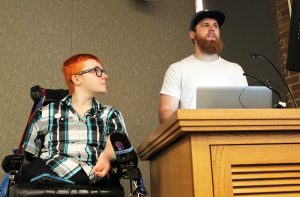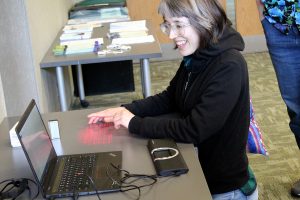May
31

Posted by Maddie Romansic on May 31st, 2018
Posted in: Accessibility, Blog, Technology
Do you produce any digital content that is consumed by other humans? (I’m guessing yes.) You should, if you don’t already, consider how you can make it more universally usable! If you work for a university, you are likely already required to adhere to these standards or something similar. There are a lot of design techniques and standards in place to help make all sorts of digital content types accessible to people with a great diversity of abilities and disabilities.
Earlier this month, I attended some presentations at the University of Washington as part of Global Accessibility Awareness Day (GAAD). Every year there are TONS of events all over the world for GAAD, in-person and online, on the topic of accessibility.
This year at the University of Washington, Janelle Raven Apigo showcased various freely available tools which can help you make your websites more accessible: AInspector, WAVE Accessibility Checker, Web Developer Toolbar, and a color contrast checker.

Photo credit: Elizabeth O Lee, DO-IT UW
A little later, K Wheeler and Shawn Berg demonstrated the user experience for some of their preferred assistive technologies, including a built-in iPhone feature called “Speak Screen” and a popular screen reader software called “JAWS.” If you have never seen an assistive technology demo—jump at the chance next time you get one! It is very elucidating as to why accessibility is so important, when you hear what a garbled mess it is when screen reader software has to try to make sense of a badly encoded webpage– and more importantly, how easy a page is to understand when just a few sensible practices are employed in its creation.

Photo credit: Elizabeth O Lee, DO-IT UW
Perhaps the most fun was getting to try out some assistive technologies that some representatives from WATAP (Washington Assistive Technology Act Program) brought to showcase. Here I am attempting to use a keyboard that is just light projected onto the tabletop. The laptop was also using “Smyle Mouse,” a face detection software that enables you to move the cursor around the screen with head movements, and click by smiling.
Assistive technology is continually advancing, but not everyone has access to the most cutting edge technology. Also, no matter how advanced the technology, if a website or a document is constructed poorly enough, it will be frustrating to people using even the most highly advanced assistive tools. (Garbage in = Garbage Out.) What we all can and should be doing now is learning the basics of how to structure documents and webpages so they are clearly organized, how to create descriptive hyperlinks (hint: avoid the text “click here”) and how to write great alternate text or descriptions for graphics.
For a basic overview of accessibility and how to get started, take a look at the University of Washington’s “Getting Started with Accessibility” page. There are a lot of great resources available for anyone to use.